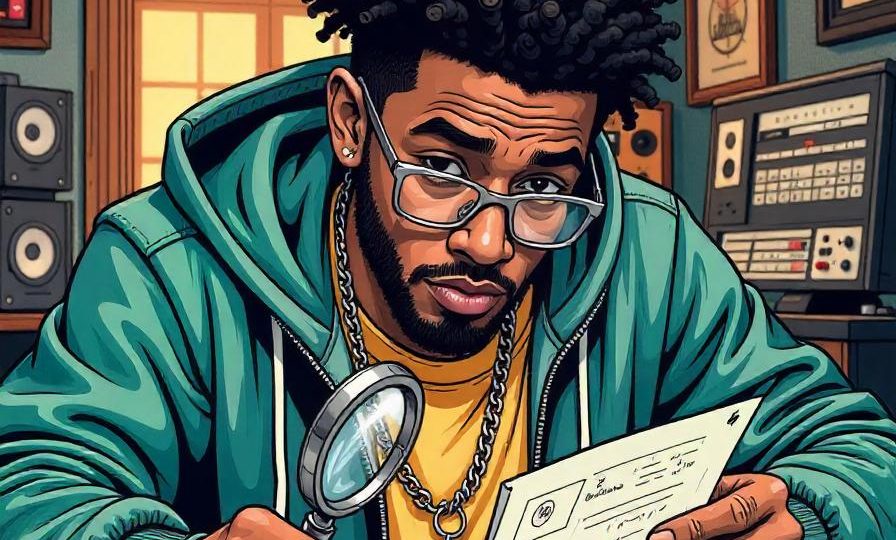An Artists Guide to Lease Beat Licences
For many artists making music today, leasing beats has become a popular choice as it provides a cost-effective way to access professional production. However, navigating beat lease agreements can be tricky without a clear understanding of the terms and conditions involved. In this guide we aim to demystify beat licensing so you can make confident, informed decisions.
What is a Beat Lease?
You can think of a beat lease essentially as a rental agreement for a backing track. Instead of working directly with a producer or purchasing exclusive rights for a beat, which can be expensive, artists pay a smaller fee to use a beat under specific terms. These terms can be set out by either the beatmaker or the platform that the beats are being sold on. This arrangement allows the producer to lease the same beat to multiple artists, making it a win-win for both parties.
Leases are typically categorized into tiers, such as basic, premium, and unlimited, with varying benefits:
- Basic Lease: These often come with restrictions on usage, such as a cap on streaming numbers or audience size. They will also often come with aThis tiered system allows artists to select a license that fits their budget and project goals, producer tag at the beginning or end of the beat.
- Premium Lease: These tend to include fewer restrictions and sometimes higher-quality audio files. They also come with the option for an untagged version.
- Unlimited Lease: This option offers the most freedom, often removing limits on streams, performances, and distribution.
This tiered system allows artists to select a license that fits their budget and goals. It’s therefore crucial that you understand these distinctions so you can choose the right option for your project.

Key Terms to Look for in a Beat Lease Agreement
When reviewing a lease agreement, you must understand the terms and conditions to avoid unexpected issues down the line. Here are some of the key elements that you may find featured in a lease agreement.
- Usage Limits
Leases often specify how you can use the beat and for how long. This often includes restrictions on the number of streams, downloads, or physical copies you can distribute. For instance, a lease may allow up to 100,000 streams on platforms like Spotify or Apple Music. If you exceed this limit, you may be required to upgrade your license or renegotiate terms with the producer. - License Duration
Some leases are time-bound, typically lasting one to five years. When the license expires, you may lose the right to distribute or monetize the track unless you renew the agreement. Clarify the renewal terms to avoid any interruptions in the availability of your music. - Exclusivity Clauses
Leased beats are generally non-exclusive. This means the producer can license the same beat to multiple artists. This is a common practice and it’s what keeps costs low. However, some agreements may offer a clause that allows for an upgrade to excusivity for an additional fee. If exclusivity is important for your project, be sure to discuss it with the producer upfront. - Credit Requirements
Producers often require credit for their work. Any such requirements sould be outlined in the lease agreement. Typical credits might look like “Produced by [Producer Name]” or “Beat by [Producer Name].” Ensure you follow these requirements to maintain good professional relationships and avoid breaching the contract. - Derivative Works
Some agreements restrict just how much you can alter the leased beat. If you plan to chop, rearrange, add to, or heavily remix the production, confirm whether this is allowed under the lease terms.
How to Avoid Common Pitfalls
Leasing beats may seem straightforward, but common mistakes that still be made. As an artist you should be aware of these pitfalls. It could save yourself time, money, and frustration in the future.
- Dont Overlook the Fine Print
Artists sometimes rush into agreements without thoroughly reading the terms. This can lead to unexpected surprises, such as limited streaming caps or restrictions on performance rights. While it’s not the most exciting aspect of Always take the time to read the lease in full or consult a professional if needed. - Misunderstanding Exclusivity
Leasing a beat doesn’t make it yours alone. Another artist could use the same track, potentially leading to confusion if both songs gain traction. Be aware of this risk and decide if you’re comfortable with non-exclusivity. - Ignoring the Producer’s Reputation
Not all producers operate with integrity. Research the producer’s track record, reviews, and previous work before committing. This helps ensure you’re working with someone trustworthy and professional. - Lack of Legal Knowledge
Many artists overlook the value of having a legal expert review their lease agreement. Google can only get you so far. While it might seem like an added expense, consulting a music lawyer can save you from potential legal troubles down the line.
Summary
Leasing beats is a fantastic way for artists to access high-quality production, but it’s essential to understand the terms before diving in. By using this guide as a reference, you can make informed decisions about whether leasing beats is right for you and your creative and professional goals.
While it’s easy to get lost in the creative and artistic aspects of making music, understanding the business side is just as crucial. A solid grasp of licensing ensures you’re not only creating great music but also protecting your career.
Knowledge is power—use it wisely, and you’ll stay in control of your musical journey.
Remember – RouteNote Create subscriptions start from as little as $2.99. You also get 10 FREE credits to spend on samples along with access to our FREE sample pack bundle when you sign-up!
